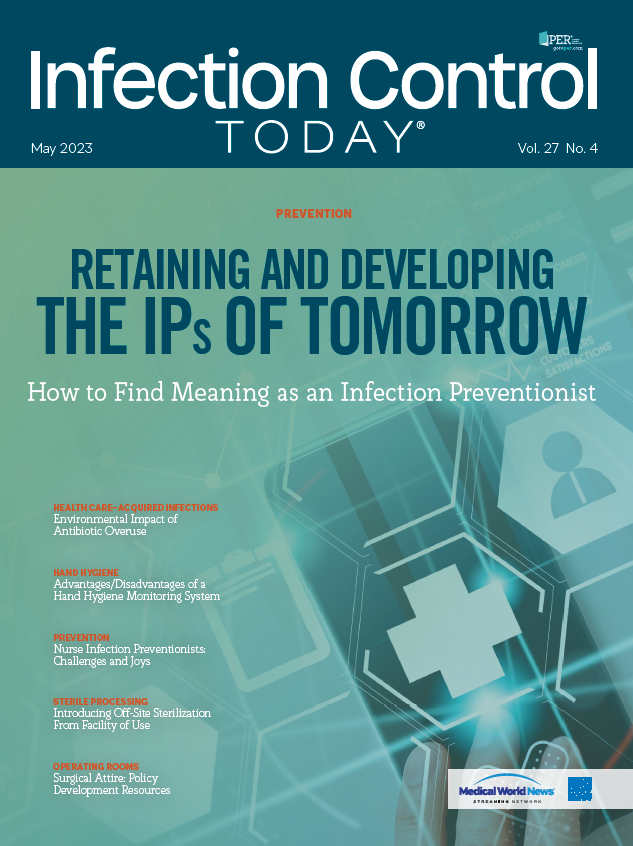Retaining and Developing the IPs of Tomorrow: How to Find Meaning as an Infection Preventionist
Infection preventionists come from many different backgrounds. However, many left the field during the COVID-19 pandemic. It will require creative methods to preserve existing IP staff and educate those entering the field.
(Adobe Stock, unknown)

The State of the Infection Prevention Workforce
Infection preventionists (IPs) come from diverse and expanding backgrounds. Their backgrounds and education result in joining the profession with different skill sets. Using the past approach for retaining and developing IPs (who were primarily nurses) will no longer work. Those who have been in the profession longer have recognized and been frustrated by the lack of opportunities for advancement. In a study on retention and professional development, Gilmartin et al1 reported that 34% of respondents listed professional advancement as a reason for separation from their facility.
IPs in current roles are tired. In a 2021 study reported by Rebmann et al,2 the authors concluded that there was extensive burnout among IPs. A 2023 report addressed the well-being of IPs during the COVID-19 pandemic, in which Melnyk et al3 found that sleep guidelines were often unmet, and 65% of respondents reported burnout. Additionally, the many routine infection prevention and control activities put on hold during the COVID-19 pandemic weigh heavy on many IPs. These activities are viewed as essential to a robust infection prevention and control program but could not be maintained during the COVID-19 response.
Nonemergent surgeries were canceled during the COVID-19 response; therefore, no surgical site surveillance existed. COVID-19 interventions included practices that would never have been acceptable during normal times. Practices such as double gloving, repeatedly reusing personal protective equipment (PPE), and wearing unnecessary PPE (eg, bouffant caps and shoe covers) were widespread practices. On another day or time, IPs would have said those actions were never practiced. IPs who entered the field as the pandemic unfolded or at its height have never experienced the ideal infection prevention and control world; they often hit the ground running with little orientation. They will need support to learn daily bread-and-butter infection prevention and control duties.
The COVID-19 pandemic response has highlighted the importance of infection prevention and control and has shined a light on IPs. There is hope for hard-wiring the essential infection prevention and control practices again. However, it will take innovative ways to engage the current IP workforce and train those new to the profession.
Strengthening and Supporting IPs
Having a baseline for interests, strengths, and opportunities is critical to supporting the development of IPs. Query the team with a formal tool, asking them to identify their strengths, opportunities, and what they want to work on, and have them prioritize these in the event multiple staff members select the same topics. Develop a plan for their professional growth and provide them with the resources they need to be successful. Make the case to the administration that they should attend the national conference even if they still need to have a presentation accepted. The Association for Professionals in Infection Control and Epidemiology (APIC) has a customizable “Convince Your Boss” letter4 to make a case for attending the annual conference. Many APIC educational offerings are remote, with some at no cost to APIC members. Work those topics into IPs’ professional development plans.
Consider ways to retain the dedicated IPs who have worked tirelessly for the past 3-plus years and create models for career advancement by restructuring the roles and job titles to create those pathways. Smathers et al5 described the process used to support organizational growth and retain and recruit experienced IPs. The updated Competency Model6 (Figure) created by APIC can be used to establish 4 levels: novel, becoming proficient, proficient, and expert. This approach is similar to the nursing ladder models used in many health care organizations, as it recognizes IPs’ current locations and provides a professional path forward if desired.
Developing creative ways to engage semiretired or retired IPs to train the future workforce will also facilitate success. A 2021 report by Gilmartin et al1 found that only 37% of responding facilities assigned a mentor to a new IP. What better way for an experienced IP to give back? They have a wealth of knowledge and experience. The pandemic has taught us that we can do many things with electronic platforms such as Zoom, Microsoft Teams, and Webex. Expanding upon mentoring or buddy programs that were in place before the pandemic is even more critical, as the demand for IPs continues to increase, and those onboarded during the COVID-19 pandemic likely did not receive a full orientation.
Encourage Curiosity
Leaders, directors, and managers need to encourage curiosity. Because of an IP’s background diversity, they will be curious about different things. Try to seek out ways to support and/or mentor those curiosities, identify other departments that can help fulfill the curiosity and support the knowledge base, and allow them to spend time in the operating room or sterile processing department to see firsthand the challenges and opportunities present in those departments. IPs need to find their joy and become a subject matter expert in an infection prevention and control topic that intrigues them.
Celebrate Successes
Celebrate big and small accomplishments both within the department and the facility. If an IP masters a new task or has an abstract or manuscript accepted, call that out. When they receive certification or become an APIC fellow, have bagels and coffee. Draw attention to health care–associated infection accomplishments. Facilities will often highlight the recognition they have received from hospital quality rankings, such as The Leapfrog Group or US News & World Report, but do not necessarily identify the individual elements contributing to that success. For example, highlighting the 0 central line–associated bloodstream infection rate and underscoring the teamwork between infection prevention and control and the critical care units brings IP recognition. If it was a tough week, celebrate Friday. It is amazing how an ice cream blizzard can uplift spirits. Acts of celebration may seem trivial, but they can contribute to overall well-being.
Be Creative
If the pandemic has taught us nothing else, it has proven that virtual meetings are possible and that working from home for some tasks can be successful. Surveillance is a task that can easily be performed remotely. Determine the feasibility of remote surveillance if it is currently not part of the workflow. Not all team members will want to work from home, but if some do, explore that possibility.
It takes time and effort to develop a competent IP. Stop the IP shuffle,7 or movement between facilities in a region, by helping them find their joy and support their professional growth.
1. Gilmartin H, Smathers S, Reese SM. Infection preventionist retention and professional development strategies: insights from a national survey. Am J Infect Control. 2021;49(7):960-962. doi:10.1016/j.ajic.2021.04.083
2. Rebmann T, Holdsworth JE, Lugo KA, Alvino RT, Gomel A. Impacts of the COVID-19 pandemic on the infection prevention and control filed: findings from focus groups conducted with Association for Professionals in Infection Control & Epidemiology (APIC) members in fall 2021. Am J Infect Control. 2023;S0196-6553(23)00098-6. doi:10.1016/j.ajic.2023.02.013
3. Melnyk BM, Hsieh AP, Mu J, Jopp DA, Miller S. Associations among infection prevention professionals’ mental/physical health, lifestyle behaviors, shift length, race, and workplace wellness support during COVID-19. Am J Infect Control. 2023;51(1):62-69. doi:10.1016/j.ajic.2022.04.004
4. APIC convince your boss letter. Accessed March 25, 2023. https://annual.apic.org/attend/grants-and-scholarships/
5. Smathers SA, Sammons JS. A strategy for expanding infection prevention resources to support organizational growth. Am J Infect Control. 2020;48(9):975-981. doi:10.1016/j.ajic.2020.04.008
6. Billings C, Bernard H, Caffery L, et al. Advancing the profession: an updated future-oriented competency model for professional development in infection prevention and control. Am J Infect Control. 2019;47(6):602-614. doi:10.1016/j.ajic.2019.04.003
8. Gilmartin H, Reese SM, Smathers S. Recruitment and hiring practices in United States infection prevention and control departments: results of a national survey. Am J Infect Control. 2021;49(1):70-74. doi:10.1016/j.ajic.2020.07.024

